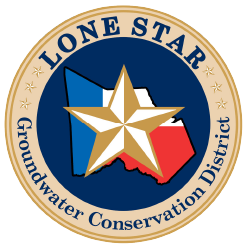Gulf Coast / Montgomery County Water Efficiency Network
Aquifers don't stop at county lines and neither should knowledge about effective conservation measures. Maximum effects are achieved when conservation takes a regional approach, which is why the Gulf Coast/Montgomery County Water Efficiency Network began.
The Network is comprised of water professionals who meet with the purpose of learning the latest about conservation tools being used locally and globally. At these meetings, there is a featured speaker, and then the group has the opportunity to share conservation-related news. The group also hosts an annual Water Conservation Symposium and takes part in joint projects as the opportunity arises.
There is no cost to join the Network or attend the meetings. For more information, contact Jennifer Thayer at jthayer@lonestargcd.org. Click the button below to join our mailing list.
Upcoming Events
Past Presentations
"Conserve Our Water Supply" Yard Sign Campaign
We invite you to join us in our effort to protect Gulf Coast/Montgomery County water supplies. Please place a sign on your lawn and let others know that you pledge to follow your community’s outdoor watering schedule, reduce or eliminate watering during winter months by following the checklist below, and to find ways to reduce water in your home and/or business.
Let your neighbors know about your commitment to water conservation by placing a Gulf Coast/Montgomery County Water Efficiency Network yard sign in your lawn. These signs are FREE and remind neighbors and passers-by to use what they need, but to not waste a drop!
You can pick up your free sign at the following locations:
Lone Star Groundwater Conservation District
655 Conroe Park North Drive
Conroe, TX 77303
Office Hours: 8 a.m. – 5 p.m. M-F
jthayer@lonestargcd.org
Galveston Bay Foundation
1100 Hercules Ave. Suite 200
Houston, TX 77058
Office Hours: 8:30 a.m. – 5 p.m. M-F
ppaciorek@galvbay.org
Checklist for a Water Wise Lawn
Watering the lawn less frequently creates a hardier lawn. Less irrigation forces the plant roots to grow deeper. Deeper roots provide more structure to the soil and hold more water, which allows lawns to better survive the drought.
Turn off or adjust your automated irrigation system to only water when necessary. As cooler months approach, reduce or eliminate outdoor lawn and landscape irrigation to allow for plants to go dormant.
Don’t water while it’s raining. Many of the newer irrigation systems have a rain sensor that disables the automatic features, but if yours doesn’t, consider adding one to your system. Watch the weather and irrigate only when necessary, and never during the hottest part of the day.
Water wisely! Adjust sprinkler heads to water the lawn only. No matter how much you water it, cement will not grow.
Replace thirsty lawns with native or other adapted plants and grasses. Not only do they use less water, but natives provide valuable habitat for wildlife.
Harness the water in your yard. Harvest rainwater by installing rain barrels, or channel your A/C condensate to your garden. Contour or shape your yard into a rain garden to slow the flow of water to help rainwater infiltrate into the soil.
Mow only when necessary and on the highest blade setting. Longer grass keeps the soil cooler, which reduces evaporation and the need to water the lawn.

